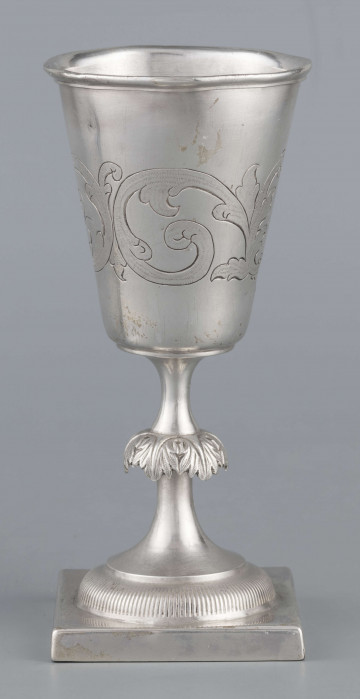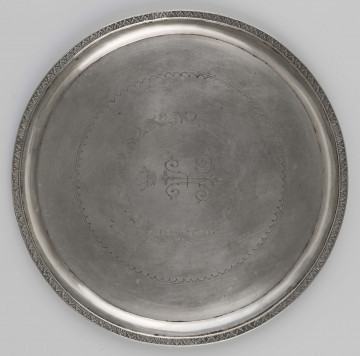
Creamer jug
1825 — 1835
National Museum in Lublin
Part of the collection: Polish and European goldsmithery of the 17th–19th c.
The sugar bowl has a form of a solid casket with a key since, in the times of its origin, sugar was a luxury good that was kept 'under lock and key'. In everyday life, an elegant sugar bowl hidden in a cupboard appeared on a table as an element of tableware during afternoon tea. In the 19th century, following the western model, the custom of social gatherings organised at home in a small group of close people also became widespread in Poland. During the Partitions, when society became much poorer, large feasts and lavish parties were rare. Afternoon gatherings served the purpose of maintaining social contacts and expressed traditional hospitality without impoverishing the hosts. A silver sugar bowl and silver spoons completed the elegance of the porcelain service. The comfort of the home also gave a sense of security, as it was the only place where politically dangerous subjects could be discussed freely. Sugar bowls, like other elements of tableware, changed with styles and fashions. Simple forms and engraved decoration were fashionable in the middle of the 19th century.
In this sugar bowl, the goldsmith consistently used soft contours, rounded all edges, even added ball-shaped legs, and composed the decoration with wavy lines. The engraved volute-leaf ornaments harmonised perfectly with the embroidery or jacquard patterns of the tablecloths used at that time. The author of this elegant vessel is the well-known and valued goldsmith Jan Gałecki (1821-1880), who was connected to Lublin all his life. His father, Wincenty Gałecki, was a carpenter, but the young Jan chose the profession of a goldsmith. He became a pupil of Karol Rotkiel, with whom family ties connected him. The master valued him highly and finally made him his successor.
Barbara Czajkowska
Author / creator
Dimensions
cały obiekt: height: 15 cm, width: 8 cm
Object type
goldsmith's art
Technique
engraving
Material
silver
Creation time / dating
Creation / finding place
Owner
The National Museum in Lublin
Identification number
Location / status

1825 — 1835
National Museum in Lublin

1840 — 1851
National Museum in Lublin

1832 — 1850
National Museum in Lublin
DISCOVER this TOPIC
National Museum in Lublin
DISCOVER this PATH
Educational path